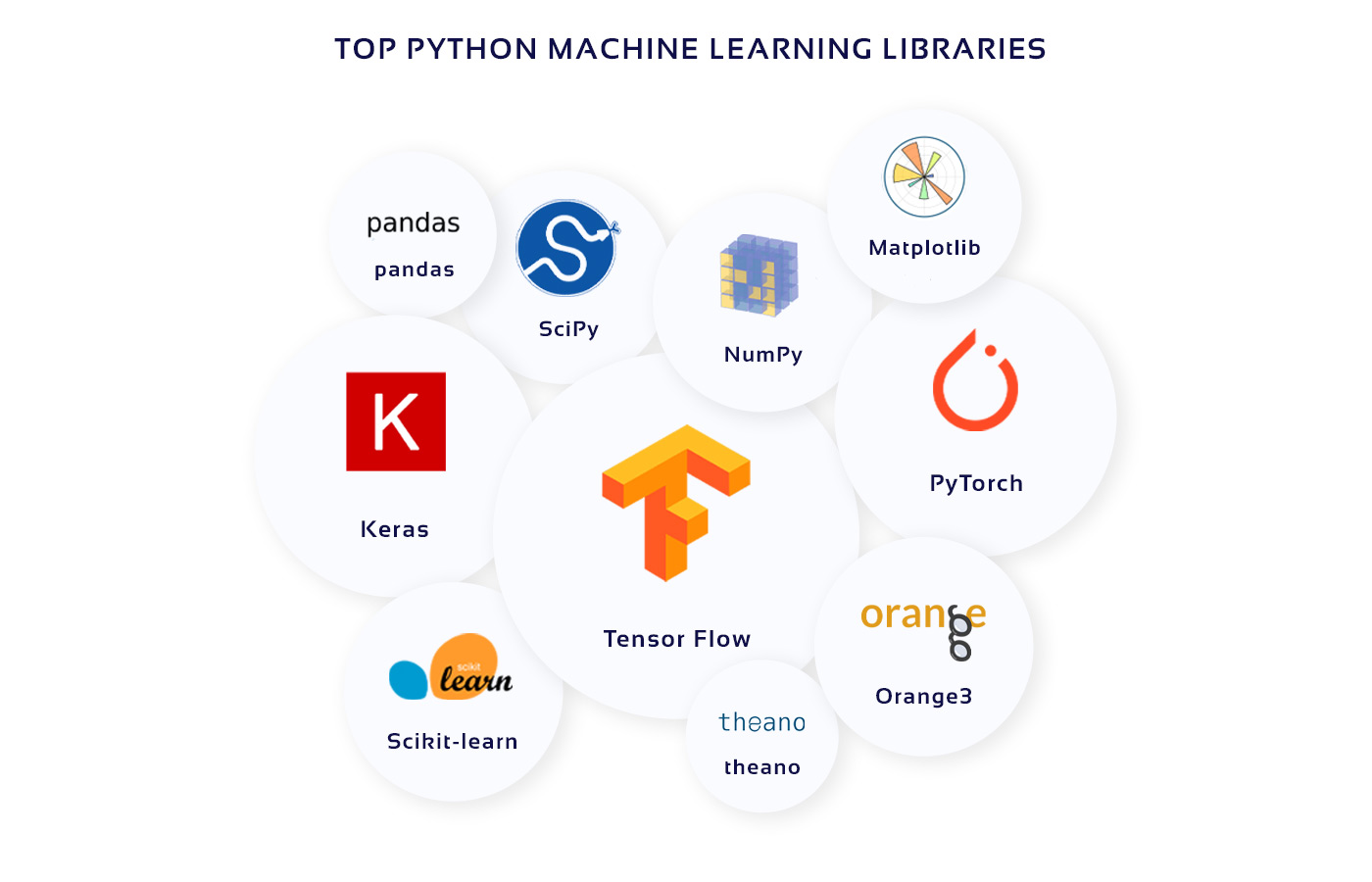Python is a versatile programming language, known for its simplicity and readability, that has gained significant popularity among developers worldwide.
One of the primary reasons behind this popularity is the availability of a plethora of libraries, which make it easier to perform complex tasks with minimal effort.
In this article, we’ll explore some of the most popular Python libraries and their uses, and even provide some examples to help you get started!
1. NumPy
Short for Numerical Python, NumPy is a popular library for numerical computing in Python. It provides support for large, multi-dimensional arrays and matrices, along with an extensive collection of mathematical functions to perform operations on these data structures.
Use case: NumPy is widely used in scientific computing, data analysis, and machine learning for tasks that require mathematical computations on large data sets.
Example:
import numpy as np
# Creating a NumPy array
a = np.array([1, 2, 3])
print("Array a:", a)
# Performing element-wise addition
b = np.array([4, 5, 6])
print("Array b:", b)
c = a + b
print("Array c (a + b):", c)
2. pandas
pandas is a powerful data manipulation library that provides data structures like DataFrame and Series, which are designed to handle and analyze large data sets efficiently. With pandas, you can easily load, manipulate, and analyze data in various formats, such as CSV, Excel, and SQL.
Use case: pandas is commonly used in data analysis, data cleaning, and data transformation tasks to make sense of large data sets.
Example:
import pandas as pd
# Creating a DataFrame
data = {'Name': ['Alice', 'Bob', 'Carol'],
'Age': [25, 30, 35]}
df = pd.DataFrame(data)
# Displaying the DataFrame
print(df)
3. TensorFlow
Developed by Google, TensorFlow is an open-source machine learning library that helps in developing and training complex neural networks. It’s highly popular for its flexibility, performance, and scalability.
Use case: TensorFlow is widely used for deep learning applications, such as image recognition, natural language processing, and recommendation systems.
Example:
import tensorflow as tf
# Create a constant tensor
a = tf.constant(5)
b = tf.constant(3)
# Perform a multiplication operation
c = tf.multiply(a, b)
print("Multiplication result:", c.numpy())
4. scikit-learn
scikit-learn is a machine learning library that provides simple and efficient tools for data mining and data analysis. It features a wide variety of algorithms for classification, regression, clustering, and dimensionality reduction, along with tools for model selection and evaluation.
Use case: scikit-learn is used in various machine learning tasks, including predictive modeling, text classification, and feature extraction.
Example:
from sklearn import datasets
from sklearn.model_selection import train_test_split
from sklearn.linear_model import LogisticRegression
from sklearn.metrics import accuracy_score
# Load the iris dataset
iris = datasets.load_iris()
# Split the data into training and testing sets
X_train, X_test, y_train, y_test = train_test_split(iris.data, iris.target, test_size=0.2)
# Create a logistic regression model
clf = LogisticRegression()
# Train the model
clf.fit(X_train, y_train)
# Make predictions
y_pred = clf.predict(X_test)
# Calculate the accuracy
accuracy = accuracy_score(y_test, y_pred)
print("Accuracy:", accuracy)
5. Flask
Flask is a lightweight web framework that
allows developers to create web applications quickly and easily using Python. It’s a micro-framework that doesn’t require any specific tools or libraries, making it perfect for small to medium-sized projects.
Use case: Flask is used for building web applications, APIs, and other web services with Python.
Example:
from flask import Flask
app = Flask(__name__)
@app.route('/')
def hello_world():
return 'Hello, World!'
if __name__ == '__main__':
app.run()
6. Beautiful Soup
Beautiful Soup is a library for web scraping in Python. It simplifies the process of parsing HTML and XML documents and allows developers to extract useful information from websites easily. Beautiful Soup automatically converts incoming documents to Unicode and outgoing documents to UTF-8.
Use case: Beautiful Soup is used to scrape data from websites, extract specific information, and perform data mining tasks on web content.
Example:
import requests
from bs4 import BeautifulSoup
url = 'https://example.com'
response = requests.get(url)
soup = BeautifulSoup(response.text, 'html.parser')
# Find all the links on the page
links = soup.find_all('a')
for link in links:
print(link.get('href'))
Summary
Python libraries play a vital role in simplifying complex tasks and enhancing productivity for developers.
We’ve explored some of the most popular Python libraries in this article, but there are many more out there! By leveraging these libraries, you can achieve more with less code, making your projects more efficient and enjoyable.
Happy coding!
Thank you for reading our blog, we hope you found the information provided helpful and informative. We invite you to follow and share this blog with your colleagues and friends if you found it useful.
Share your thoughts and ideas in the comments below. To get in touch with us, please send an email to dataspaceconsulting@gmail.com or contactus@dataspacein.com.
You can also visit our website – DataspaceAI




